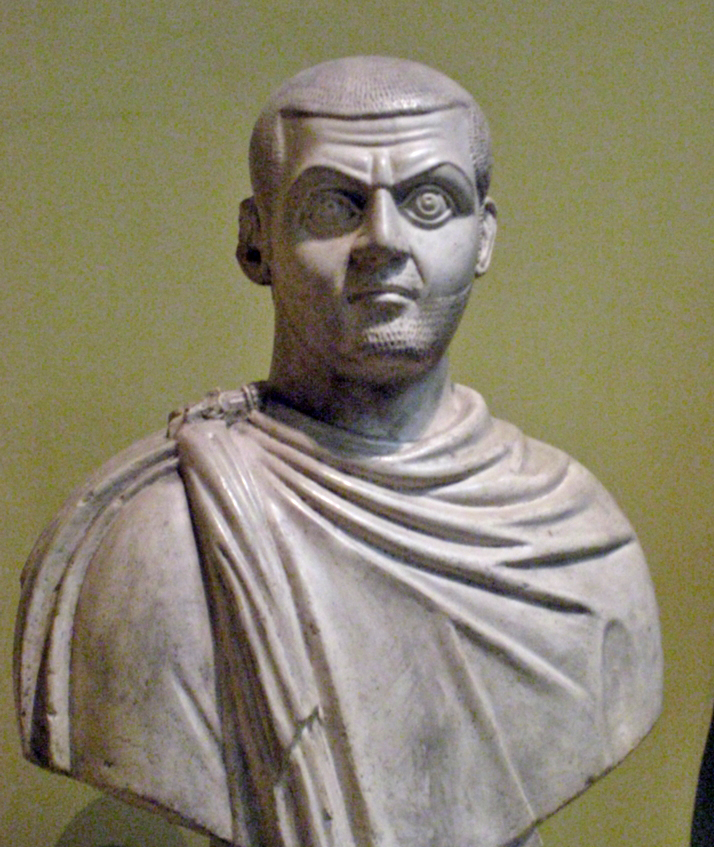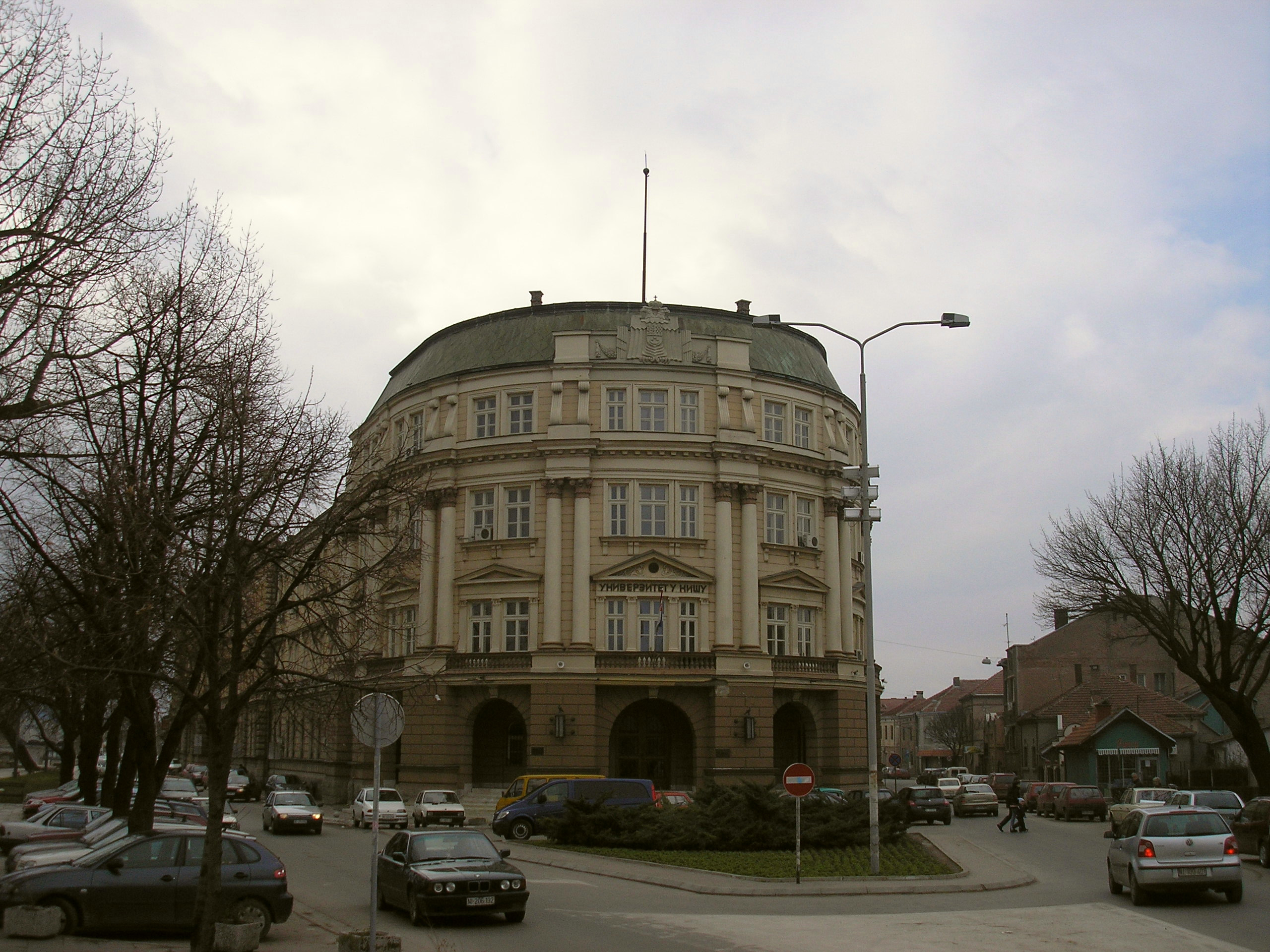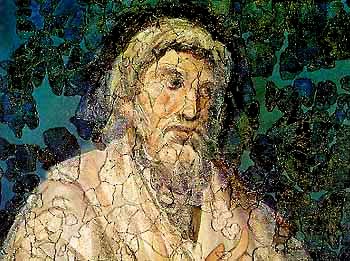|
Maximinus II
Galerius Valerius Maximinus, born as Daza (20 November 270 – July 313), was Roman emperor from 310 to 313 CE. He became embroiled in the Civil wars of the Tetrarchy between rival claimants for control of the empire, in which he was defeated by Licinius. A committed pagan, he engaged in one of the last persecutions of Christians, before issuing an edict of tolerance near his death. Name The emperor Maximinus was originally called Daza, a common name in Illyria, where he was born. The form "Daia" given by the Christian pamphleteer Lactantius, an important source on the emperor's life, is considered a misspelling and deprecated. He acquired the name Maximinus at the request of his maternal uncle, Galerius, and his full name as emperor was Galerius Valerius Maximinus. Modern scholarship often refers to him as Maximinus Daza, though this particular form is not attested by epigraphic or literary evidence. Early career He was born in the Roman Illyria region to the sister of emp ... [...More Info...] [...Related Items...] OR: [Wikipedia] [Google] [Baidu] |
Common Era
Common Era (CE) and Before the Common Era (BCE) are year notations for the Gregorian calendar (and its predecessor, the Julian calendar), the world's most widely used calendar era. Common Era and Before the Common Era are alternatives to the original Anno Domini (AD) and Before Christ (BC) notations used for the same calendar era. The two notation systems are numerically equivalent: " CE" and "AD " each describe the current year; "400 BCE" and "400 BC" are the same year. The expression traces back to 1615, when it first appeared in a book by Johannes Kepler as the la, annus aerae nostrae vulgaris (), and to 1635 in English as " Vulgar Era". The term "Common Era" can be found in English as early as 1708, and became more widely used in the mid-19th century by Jewish religious scholars. Since the later 20th century, BCE and CE have become popular in academic and scientific publications because BCE and CE are religiously neutral terms. They are used by others who wish to be sensi ... [...More Info...] [...Related Items...] OR: [Wikipedia] [Google] [Baidu] |
Battle Of Tzirallum
The Battle of Tzirallum was part of the civil wars of the Tetrarchy fought on 30 April 313 between the Roman armies of emperors Licinius and Maximinus. The battle location was on the "Campus Serenus" at Tzirallum, identified as the modern-day town of Çorlu, in Tekirdağ Province, in the Turkish region of Eastern Thrace. Sources put the battle between 18 and 36 Roman miles from Heraclea Perinthus, the modern-day town of Marmara Ereğlisi. Background After the death of Galerius in AD 311, there remained four emperors in the Roman world: Constantine I, who controlled Gaul, Spain, and Britain; Maxentius, in Africa and Italy; Maximinus Daza in Roman Asia and Egypt; and Licinius in Macedonia, Greece, and Illyricum.''An Encyclopedia of World History'', (Houghton Mifflin Company, Boston, 1952), ch. II., ''Ancient History'', p. 119 The expansionist ambitions of Maxentius and Maximinus led to a bellicose alliance of these princes against Constantine and Licinius, with the under ... [...More Info...] [...Related Items...] OR: [Wikipedia] [Google] [Baidu] |
Sassanid Empire
The Sasanian () or Sassanid Empire, officially known as the Empire of Iranians (, ) and also referred to by historians as the Neo-Persian Empire, was the History of Iran, last Iranian empire before the early Muslim conquests of the 7th-8th centuries AD. Named after the Sasanian dynasty, House of Sasan, it endured for over four centuries, from 224 to 651 AD, making it the longest-lived List of monarchs of Persia, Persian imperial dynasty. The Sasanian Empire succeeded the Parthian Empire, and re-established the Persians as a major power in late antiquity alongside its neighbouring arch-rival, the Roman Empire (after 395 the Byzantine Empire).Norman A. Stillman ''The Jews of Arab Lands'' pp 22 Jewish Publication Society, 1979 International Congress of Byzantine Studies ''Proceedings of the 21st International Congress of Byzantine Studies, London, 21–26 August 2006, Volumes 1–3'' pp 29. Ashgate Pub Co, 2006 The empire was founded by Ardashir I, an Iranian ruler who rose to po ... [...More Info...] [...Related Items...] OR: [Wikipedia] [Google] [Baidu] |
Constantine I
Constantine I ( , ; la, Flavius Valerius Constantinus, ; ; 27 February 22 May 337), also known as Constantine the Great, was Roman emperor from AD 306 to 337, the first one to convert to Christianity. Born in Naissus, Dacia Mediterranea (now Niš, Serbia), he was the son of Flavius Constantius, a Roman army officer of Illyrian origin who had been one of the four rulers of the Tetrarchy. His mother, Helena, was a Greek Christian of low birth. Later canonized as a saint, she is traditionally attributed with the conversion of her son. Constantine served with distinction under the Roman emperors Diocletian and Galerius. He began his career by campaigning in the eastern provinces (against the Persians) before being recalled in the west (in AD 305) to fight alongside his father in Britain. After his father's death in 306, Constantine became emperor. He was acclaimed by his army at Eboracum ( York, England), and eventually emerged victorious in the civil wars against ... [...More Info...] [...Related Items...] OR: [Wikipedia] [Google] [Baidu] |
Roman Egypt
, conventional_long_name = Roman Egypt , common_name = Egypt , subdivision = Province , nation = the Roman Empire , era = Late antiquity , capital = Alexandria , title_leader = Praefectus Augustalis , image_map = Roman Empire - Aegyptus (125 AD).svg , image_map_caption = Province of Aegyptus in AD 125 , year_start = 30 BC , event_start = Conquest of Ptolemaic Kingdom , event1 = Formation of the Diocese , date_event1 = 390 , year_end = 641 , event_end = Muslim conquest , life_span = 30 BC – 641 AD , stat_year1 = 1st century AD , stat_pop1 = . , today = Egypt , p1 = Ptolemaic Kingdom , flag_p1 = Ptolemaic-Empire 200bc.jpg , s1 = Sasanian Egypt , flag_s1 = Derafsh Kaviani flag of the late Sassanid Empire.svg , s2 = Rashidun Caliphate , flag_s2 = Mohammad adil-Rashidun-empire-at-its-peak-close.PNG , demonym= Egypt ( ; ) was a subdivision of the Roman Empire fr ... [...More Info...] [...Related Items...] OR: [Wikipedia] [Google] [Baidu] |
Syria (Roman Province)
Roman Syria was an early Roman province annexed to the Roman Republic in 64 BC by Pompey in the Third Mithridatic War following the defeat of King of Armenia Tigranes the Great. Following the partition of the Herodian Kingdom of Judea into tetrarchies in 6 AD, it was gradually absorbed into Roman provinces, with Roman Syria annexing Iturea and Trachonitis. Provincia Syria Syria was annexed to the Roman Republic in 64 BC, when Pompey the Great had the Seleucid king Antiochus XIII Asiaticus executed and deposed his successor Philip II Philoromaeus. Pompey appointed Marcus Aemilius Scaurus to the post of Proconsul of Syria. Following the fall of the Roman Republic and its transformation into the Roman Empire, Syria became a Roman imperial province, governed by a Legate. During the early empire, the Roman army in Syria accounted for three legions with auxiliaries who defended the border with Parthia. In 6 AD Emperor Augustus deposed the ethnarch Herod Archelaus an ... [...More Info...] [...Related Items...] OR: [Wikipedia] [Google] [Baidu] |
Moravian Banovina
The Morava Banovina or Morava Banate ( sh-Cyrl-Latn, separator=" / ", Моравска бановина, Moravska banovina), was a province ( banovina) of the Kingdom of Yugoslavia between 1929 and 1941. This province consisted of parts of present-day Central Serbia (including Vučitrn and Podujevo in Kosovo) and it was named after the Morava Rivers. The capital city of the Morava Banovina was Niš. Borders According to the 1931 Constitution of the Kingdom of Yugoslavia, :''The Morava Banovina is bounded on the north and the east by the State frontiers with Romania and Bulgaria as for as the southern boundary of the district of Lužnica (at Descani Kladenac). From this point the boundary of the Banovina follows the southern boundaries of the districts of Lužnica, Niš, Dobrić, Prokuplje, Kosanica, Lab and Vučitrn, including all these districts, and at the intersection of the boundaries of the three districts of Vučitrn, Gračanica and Drenica it joins the boundary of ... [...More Info...] [...Related Items...] OR: [Wikipedia] [Google] [Baidu] |
Moesia
Moesia (; Latin: ''Moesia''; el, Μοισία, Moisía) was an ancient region and later Roman province situated in the Balkans south of the Danube River, which included most of the territory of modern eastern Serbia, Kosovo, north-eastern Albania, northern parts of North Macedonia (Moesia Superior), Northern Bulgaria, Romanian Dobruja and small parts of Southern Ukraine (Moesia Inferior). Geography In ancient geographical sources, Moesia was bounded to the south by the Haemus (Balkan Mountains) and Scardus (Šar) mountains, to the west by the Drinus (Drina) river, on the north by the Donaris (Danube) and on the east by the Euxine (Black Sea). History The region was inhabited chiefly by Thracians, Dacians ( Thraco-Dacian), Illyrian and Thraco-Illyrian peoples. The name of the region comes from Moesi, Thraco-Dacian peoples who lived there before the Roman conquest. Parts of Moesia belonged to the polity of Burebista, a Getae king who established his rule over a large part ... [...More Info...] [...Related Items...] OR: [Wikipedia] [Google] [Baidu] |
Dacia Ripensis
Dacia Ripensis () was the name of a Roman province in the northern Balkan peninsula, immediately south of the Middle Danube. Its capital was Ratiaria (modern Archar, Bulgaria). It was a district less urban than neighbouring Dacia Mediterranea and more militarized; "military camps and forts, rather than cities, were typical of the province". Besides Ratiaria, Oescus was the major settlement. Dacia Ripensis was one of the "Two Dacias" established south of the Danube in the late 3rd century. The Roman emperor Aurelian () abandoned the province of Roman Dacia established by Trajan () in 106 AD on the northern bank of the river, and created the two new "Dacias" between the existing provinces of Moesia Prima (upstream) and Moesia Secunda (downstream). The northern part of Aurelian's Dacia Aureliana is attested as "Dacia Ripensis" in 343/4. The southern part, with its capital at Serdica (modern Sofia) was known as Dacia Mediterranea. According to the '' Laterculus Veronensis'', both ... [...More Info...] [...Related Items...] OR: [Wikipedia] [Google] [Baidu] |
Cognomen
A ''cognomen'' (; plural ''cognomina''; from ''con-'' "together with" and ''(g)nomen'' "name") was the third name of a citizen of ancient Rome, under Roman naming conventions. Initially, it was a nickname, but lost that purpose when it became hereditary. Hereditary ''cognomina'' were used to augment the second name, the ''nomen gentilicium'' (the family name, or clan name), in order to identify a particular branch within a family or family within a clan. The term has also taken on other contemporary meanings. Roman names Because of the limited nature of the Latin ''praenomen'', the ''cognomen'' developed to distinguish branches of the family from one another, and occasionally, to highlight an individual's achievement, typically in warfare. One example of this is Gnaeus Pompeius Magnus, whose cognomen ''Magnus'' was earned after his military victories under Sulla's dictatorship. The ''cognomen'' was a form of distinguishing people who accomplished important feats, and those who al ... [...More Info...] [...Related Items...] OR: [Wikipedia] [Google] [Baidu] |
Lactantius
Lucius Caecilius Firmianus Lactantius (c. 250 – c. 325) was an early Christian author who became an advisor to Roman emperor, Constantine I, guiding his Christian religious policy in its initial stages of emergence, and a tutor to his son Crispus. His most important work is the '' Institutiones Divinae'' ("The Divine Institutes"), an apologetic treatise intended to establish the reasonableness and truth of Christianity to pagan critics. He is best known for his apologetic works, widely read during the Renaissance by humanists, who called Lactantius the "Christian Cicero". Also often attributed to Lactantius is the poem '' The Phoenix'', which is based on the myth of the phoenix from Egypt and Arabia. Though the poem is not clearly Christian in its motifs, modern scholars have found some literary evidence in the text to suggest the author had a Christian interpretation of the eastern myth as a symbol of resurrection. Biography Lactantius was of Punic or Berber origin, born ... [...More Info...] [...Related Items...] OR: [Wikipedia] [Google] [Baidu] |



.jpg)


